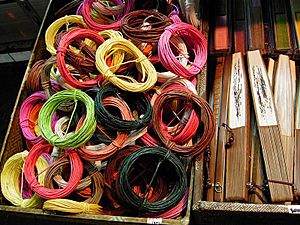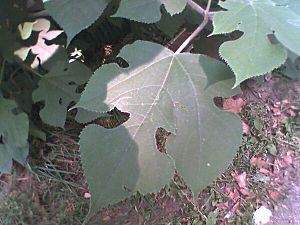Korean paper facts for kids
| Korean paper | |
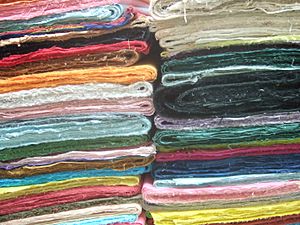 |
|
Quick facts for kids Korean name |
|
|---|---|
| Hangul |
한지
|
| Hanja |
韓紙
|
| Revised Romanization | hanji |
| McCune–Reischauer | hanji |
Hanji is a special kind of traditional paper from Korea. Its name, Hanji, simply means "paper of Korea." "Han" is an old word for Korea, and "ji" means paper. It's known for being very strong and useful.
Contents
History of Hanji
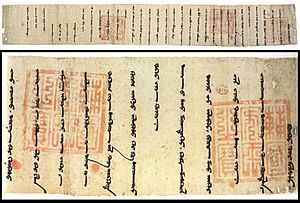
The story of Hanji began a long time ago, around the 4th century. Koreans learned how to make paper from China, along with the religion of Buddhism. Soon, Korean paper became famous across East Asia for being the best quality paper around.
During the Goryeo period, Hanji became even more popular. This was because new printing methods were developed in Korea. Hanji's best times continued through the Joseon Dynasty. However, things changed when Western countries started making paper very quickly and cheaply. Also, during a difficult time, traditional Korean culture faced challenges.
In the 1970s, a big project called the New Community Movement aimed to modernize Korea fast. This also caused the Hanji industry to shrink. Many old straw-roofed homes, which used Hanji for floors, walls, and windows, were replaced. Today, a new challenge for Hanji is cheap paper from China.
As of 2009, there are still twenty-six Hanji factories in South Korea. They make Hanji for artists, writers, and people who fix old documents. Many temples and everyday people also use it. Today, Hanji is seen as an important tradition to keep alive. More people are getting interested in Hanji arts and crafts. It has also become a popular part of tourism for visitors to Korea.
What Makes Hanji Special?
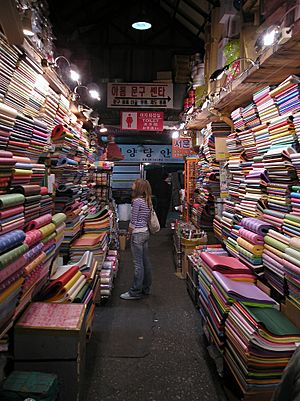
Hanji's Amazing Strength
Hanji is very well-known in Asia for how long it lasts. Other old papers often need special storage to survive. But Hanji papers can still be shown in museums without extra protection. For example, the oldest text made of Hanji in Korea is about 800 years old and is still in great shape!
Hanji for Air and Warmth
Hanji is good at letting air through, but it also helps keep a room warm. In the past, Koreans used Hanji to cover their wooden doors. This helped keep their homes cool in summer and warm in winter.
Hanji is Waterproof
In 2006, there was a lamp festival in Paris, France. Many lamps were lit up in a park. Suddenly, it started to rain, and people worried the lamps would go out. But the lamps made from traditional Hanji did not turn off. The Hanji kept the rain out, protecting the candles inside. This showed how amazing Hanji's waterproof quality is.
How Hanji is Used
Since paper first became common in ancient Korea, people have found many unique ways to use it. Hanji helped people in their daily lives. They used it to cover door frames to control room temperature. Important people also wrote many documents on Hanji. This is a big reason why Korea's old records are still so well preserved today.
Even ancient Chinese dynasties used Hanji to write down their emperors' achievements. Hanji was also a main product that Korean kingdoms traded with other countries. A very unique use of Hanji was making armor! Even though it's paper, Hanji was very strong and tough. It was waterproof and didn't tear easily. There are records in Korea that say people made armor and suits from Hanji. These were called Jigap.
Today, Korean paper is mostly used for beautiful arts and crafts.
Images for kids
See also
 In Spanish: Hanji para niños
In Spanish: Hanji para niños


